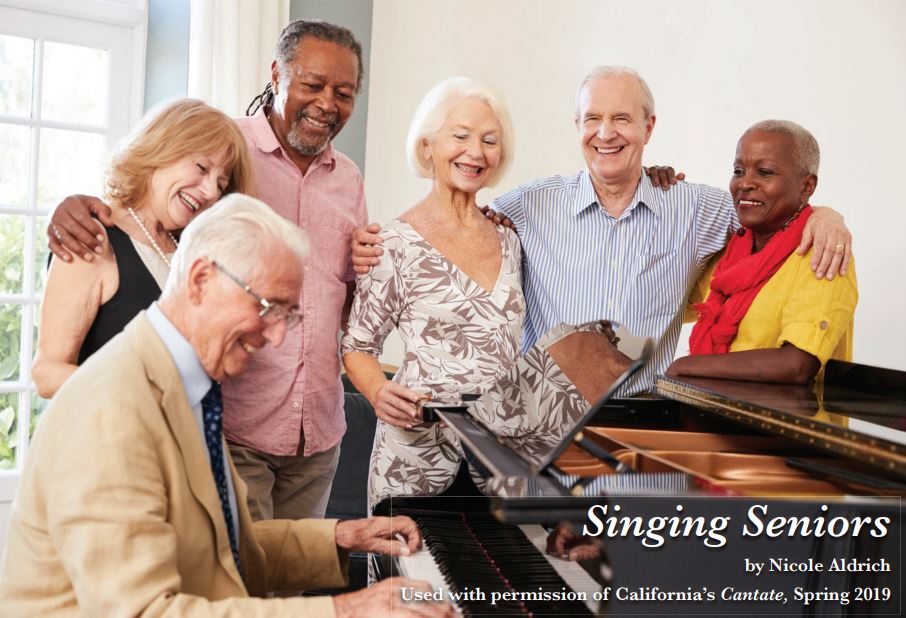
ChorTeach is ACDA’s quarterly publication for choral conductors and teachers at all levels. It is published online, and each issue contains four practical articles. If you are not already a member of ACDA, you can join and receive access to ChorTeach online. Below is an excerpt from an article written by Nicole Aldrich appearing in the Summer 2019 issue.
_____________________________________
Older adults can bring a wealth of experience, wisdom, and grace to our ensembles. Along with these, they bring their older bodies and voices. And while the older adult voice is not the same instrument as the one the singer enjoyed in her or his younger years, it is simply not true that older adults should accept voice changes as inevitable. Choral directors can do much to keep their “chronologically gifted” singers performing at a high level for years.
Choir directors typically are most aware of the physical changes that singers undergo as they age because these changes have effects that we can hear in rehearsal: loss of vocal range, change in vibrato rate or size, loss of breath control, decreased endurance, pitch inaccuracies, breathiness, and changes in loudness, etc. Some of these physical changes include muscle wasting and related changes in balance, posture, and coordination, reduced vital capacity in the lungs, and stiffening, thinning, and deterioration of the vocal folds, which can cause the vocal folds to bow. Bowed vocal folds do not close as strongly. This can lead to breathiness, hoarseness, and vocal strain. Hearing loss, side effects from medications, and other health problems are also factors for some older adults. The good news is that many of these changes can be halted or even reversed with regular physical and vocal exercise.
Otolaryngologist Robert T. Sataloff notes that the bodily changes characteristics of aging are not unique. In many ways, they are identical to those seen in disease and in disuse such as prolonged bed rest or immobilization of a limb. In particular, muscle disuse causes loss of muscle fi bers indistinguishable from that seen with advanced age. Exercise avoids or reverses many of these changes in the young, and it appears to have the same effect when the changes are caused by aging.1
The choir director can help by encouraging singers to get regular exercise, perhaps helping to establish daytime walking groups for choir members, for example. Inviting a physical therapist or trainer to speak to the ensemble may also be helpful since many older singers, especially women, are unaware of the benefits of strength training. Such a professional can lead the ensemble in simple exercises and direct individuals to other appropriate resources. Over time, singers’ increased physical strength, stamina, and flexibility can result in improved breath management and vocal endurance, allowing greater control of pitch, loudness, vibrato size and rate, and tone quality.
Directors should also encourage their singers to seek out voice lessons or vocal therapy. Several studies have investigated vocal exercises to improve voice quality in the elderly. Some of these studies focused on improving speech quality and efficiency, but since they address the same age-related physical changes, older singers who try them may also find improvement in their singing voices.
1 Robert T. Sataloff et al, “The Aging Adult Voice,” Journal of Voice 11, no. 2 (1997), 157.
__________________
Read more in the Summer 2019 issue at acda.org/chorteach.


Leave a Reply
You must be logged in to post a comment.